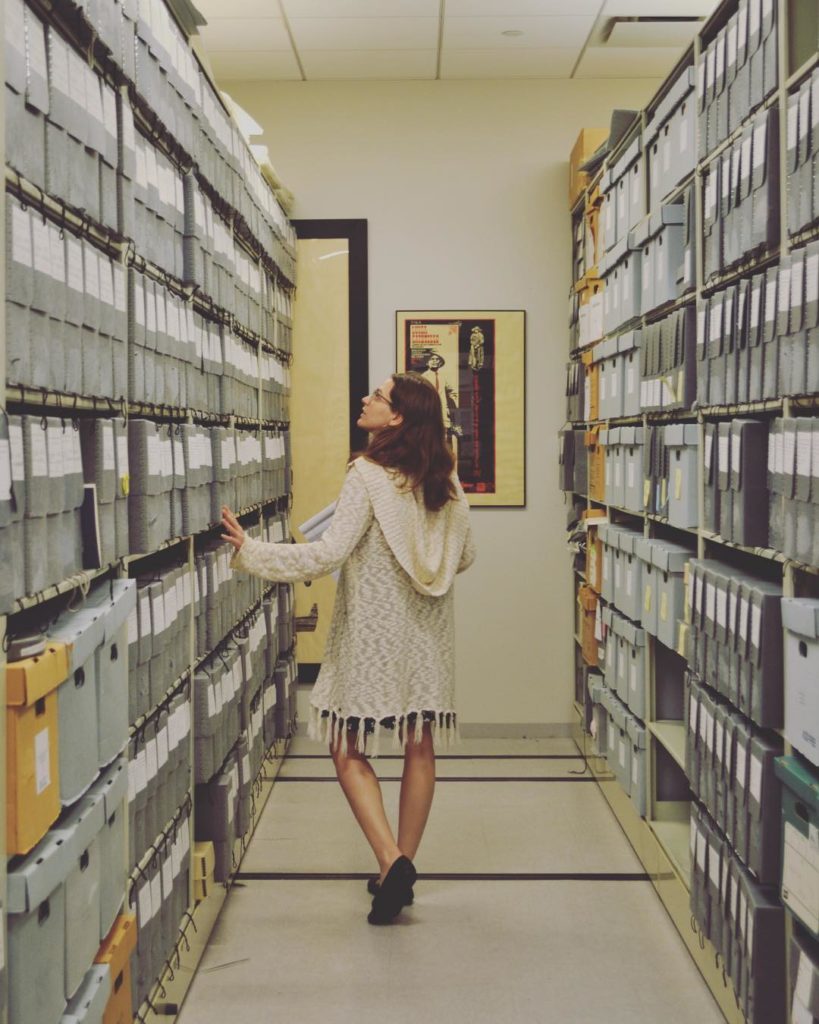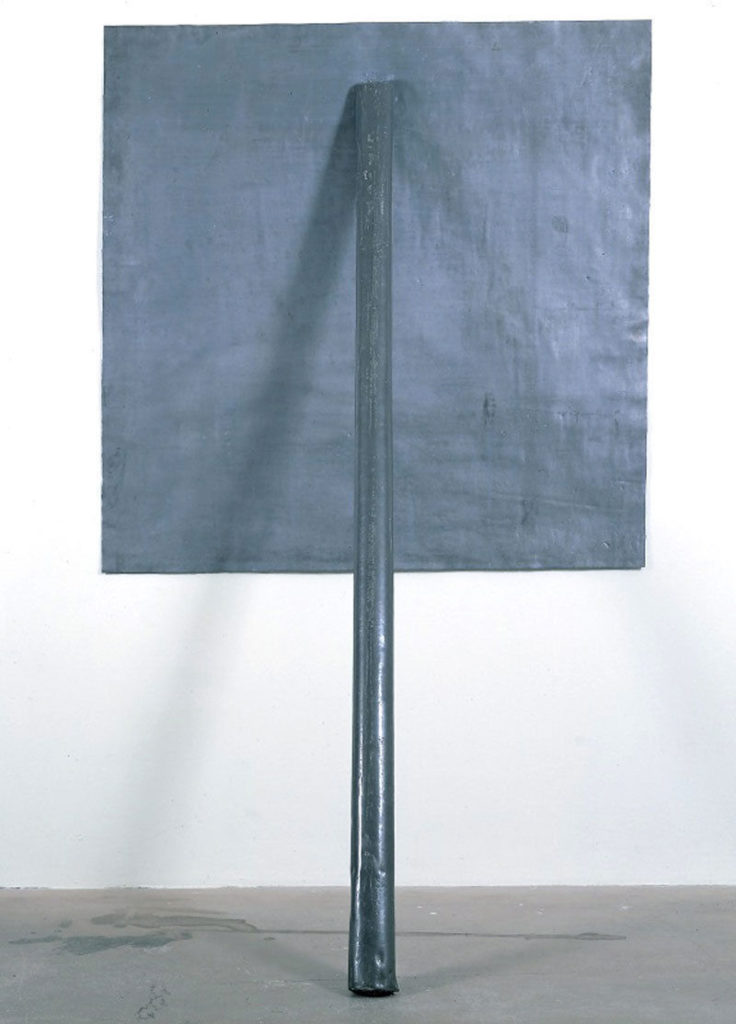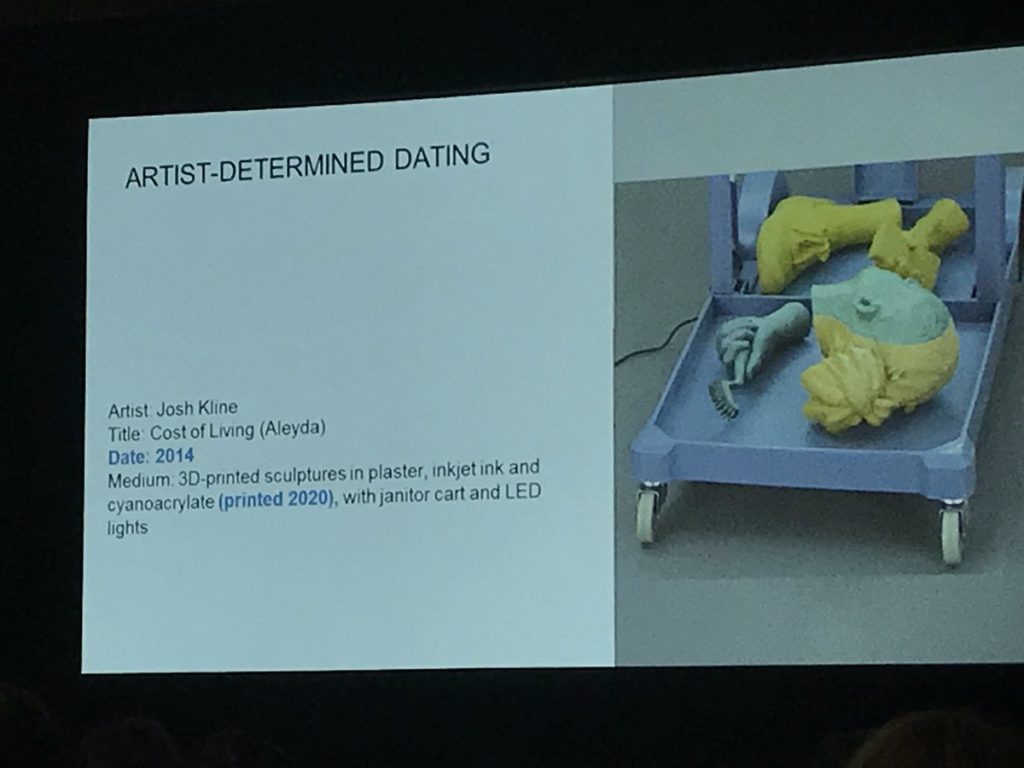
Coral Salomón is currently the National Digital Stewardship Resident in Art Information at the University of Pennsylvania, and attended the annual conference of the American Institute for the Conservation of Historic and Artistic Works (AIC) with support from a Kress Cross-Pollinator Fellowship. Learn more about Coral, or read on for her reflection on the conference.
Materials Matter?: Searching for ethical and practical conservation strategies in the age of reproduction and digitality
Thanks to the generous support of the Digital Library Federation, the Samuel H. Kress Foundation, and the American Institute for Conservation of Historic & Artistic Works (AIC), I had the opportunity to travel and present at AIC’s 46th Annual Meeting, Material Matters 2018, in Houston, Texas.
Although I am an archivist (currently I am the National Digital Stewardship Resident in Art Information at the University of Pennsylvania), working with new media artworks has led me to confront issues that also beguile conservators: How do we acquire, provide access, classify, document, and preserve these works?

Material Matters 2018 was my first experience at a conference dedicated solely to conservation. I spent most of the time learning from the excellent speakers in the Electronic Media Group, the section where I also presented. However, one of the joys of AIC is that I had the opportunity to listen to presentations on a wide array of themes and materials, whose lessons can be applied to our line of work.
During the Whitney Replication Committee: Transparency in the Age of Reproduction, conservators Margo Delidow and Clara Rojas Sebesta expounded on the challenges that led to the committee’s creation. They discussed why we feel comfortable with certain replications and not others, the need to seek an ethical replication practice, and the importance of clarity in language, especially when transmitting information of museum interventions to patrons.
Historically, artists directly transmitted their handwork into a singular authentic work. However, as art objects become reproducible, it has become necessary to rethink how we frame our approaches to preservation and conservation in a way that respects the work’s physical and conceptual identities.
The Whitney Replication Committee’s creation came as a consequence of the major interventions performed on Richard Sera’s Prop. Throughout the life of the work conservators glued new Velcro strips, changed its aluminum foil, and performed other extreme conservation measures to ensure the work’s survival. These interventions forced the conservators to ask: When does the work stop being the work? At what point do conservation efforts cross the line?

The speakers acknowledged that transformation has always been a part of a museum objects’ lifecycle. However, museum interventions have become so pervasive that the profession needs to create standards, guidelines, and document how they impact the works.
Some of the recommendations issued by the Replication Committee are already best practices for the stewardship of time-based media art, such as interviewing artists at the time of acquisition. The artist questionnaire anticipates museum interventions and asks the artists to predetermine when these would have to take place.
One of the ideas that I found very compelling is that instead of seeing interventions as subtracting from the authenticity of the work, the Replication Committee sees it as an integral component that needs to be clearly articulated, especially to the public. Clear and standardized language is not only for internal documentation, but to better educate the public about the museum’s hand in the artworks they are viewing. They embrace transparency as a technique to mediate some of the tensions posed by contemporary art.
https://twitter.com/CSalinPhilly/status/1002647112771915778?ref_src=twsrc%5Etfw
Another thought that struck me during the conference is how valuable and crucial it is to use a code of ethics to guide the decision-making process, regardless of the artworks’ medium. The Metropolitan Museum of Art Costume Institute’s Christopher Mazza and Sarah Scaturro provided a great case study on this topic.
When struck with a challenge between conservation principles and Kawakubo’s curatorial choices during her career encompassing exhibition, Rei Kawakubo/Comme des Garçons: Art of the In-Between, the team relied on AIC’s Code of Ethics to navigate their actions.
https://twitter.com/CSalinPhilly/status/1002669079902261249
As technology blurs and subverts traditional notions of authenticity, ownership, spaces, physicality, perceptions of stewardship, and the role of patrons and knowledge institutions, adhering to a standardized Code of Ethics for replicable mediums and new media art becomes increasingly paramount. As time passes, we might stumble upon challenges that careful documentation and detailed artist interviews might not anticipate. As articulated by Delidow, science might evolve to the point where we could clone an artwork to the molecular level. But, should we?
This isn’t going to end well.
I left AIC thinking about what it means to reconcile the tensions that arise between replication, entropy, and fulfilling our professional duty of safeguarding the cultural patrimony for future generations. While these are not easy questions with simple answers, I am animated by the conversations I encountered in Houston and believe there is hope in this collaborative search for strategies.
Until next year.
